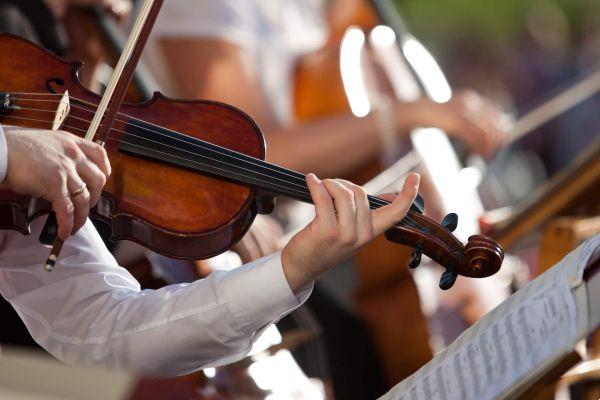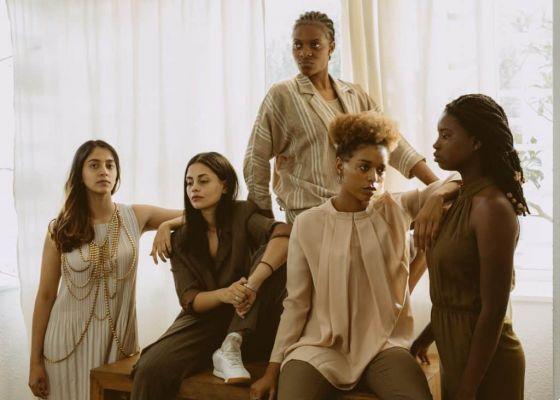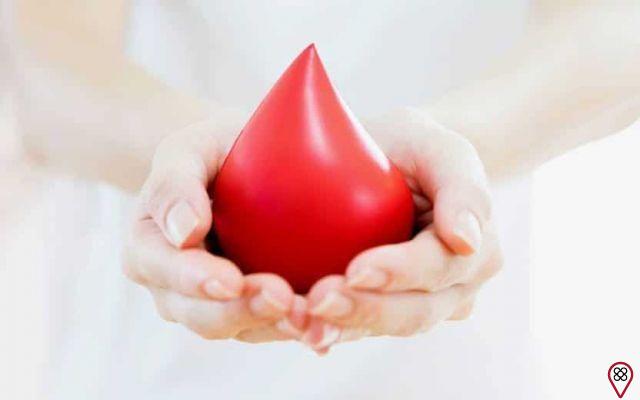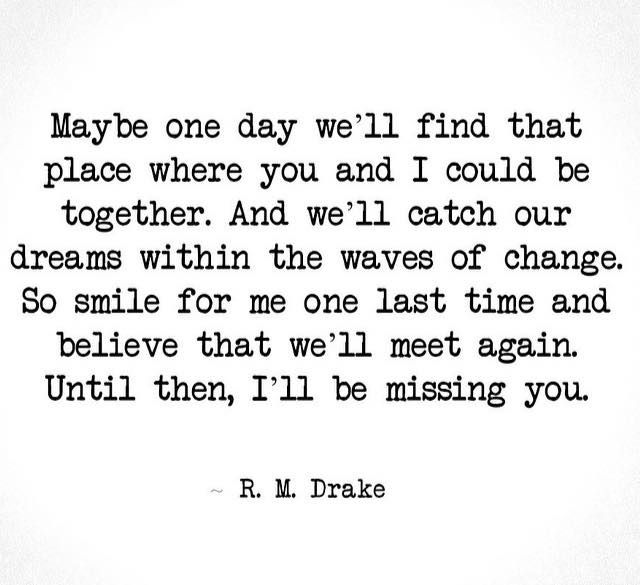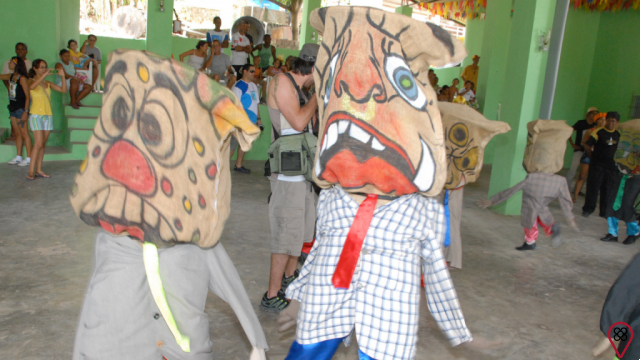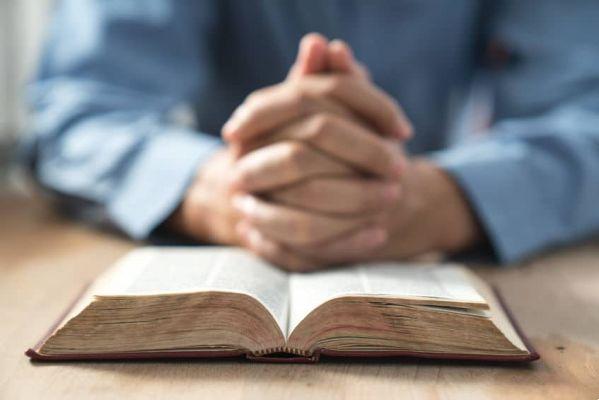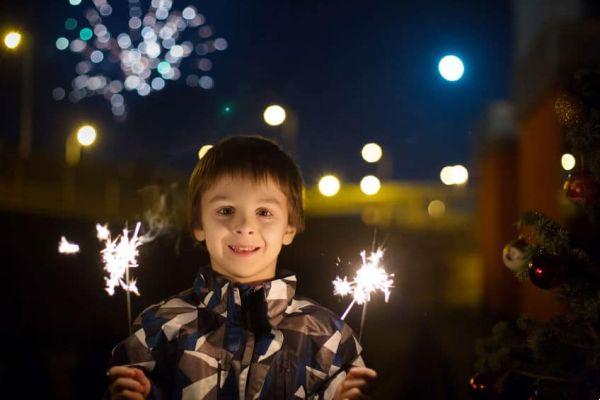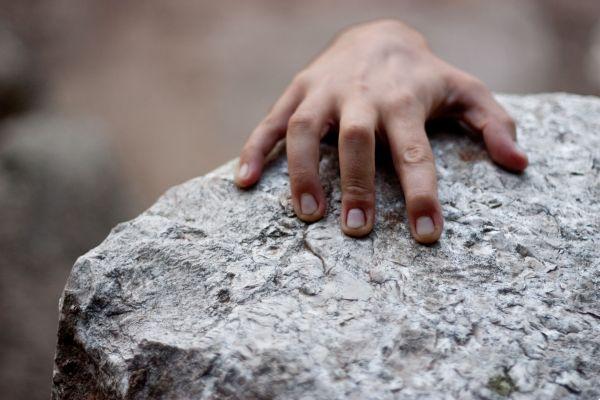Thor, Odin, Loki, Vikings… It's practically impossible that you haven't heard or read something about Norse Mythology, because it's already become pop culture! Do you, however, know in depth this set of beliefs, gods and legends that emerged in northern Europe?
To present the history of Norse mythology and list its main gods, heroes, monsters, creatures and sacred animals, we have prepared this article. In addition, you can check here the main myths of this set of beliefs and where it is present today, such as in series, movies and books. Check out the article!
History of Norse Mythology
Norse mythology, also known as Viking mythology or Scandinavian mythology, is a set of legends that emerged in the region of Europe known as Scandinavia, formed by Norway, Sweden, Denmark, Iceland and the Faroe Islands.
It is not possible to specify the time when these legends emerged, because written records were slow to emerge in the region. The oldest evidence of this religion is a set of stories called the Icelandic Edas, dating back to the 90th century, but even the historian and Emperor Tacitus, who lived around XNUMX CE, wrote about it.
The main sources on Norse mythology, the Edas, were written by Icelandic Snorri Sturluson, who was a local leader as well as a poet. The “Eda in prose” brings together the traditional tales of the religion, while the “Eda in verse” contains 29 long poems with narratives about the Norse gods and heroes.

Norse mythology was quite different from region to region. Therefore, while some gods were worshiped in one place, they could be virtually ignored by others. In general, Norse mythology was not just a religion, but an essential part of the culture of the Scandinavian peoples.
Norse mythology is considered a pre-Christian religion, because as Christianity advanced over the Scandinavian countries, around the XNUMXth century onwards, this set of beliefs was increasingly prohibited by Christians, ending up with few faithful, considered a religion. pagan or just a set of legends.
Norse Mythology Gods
Norse mythology is a polytheistic religion, that is, in which there is worship of more than one god, which coexist. The divine figures of Norse mythology are portrayed less as divine and heavenly beings, like the Christian God, and more as flawed creatures, with flaws and qualities, like us human beings.
The Norse gods are divided between two clans, the Aesir (Ass are the male gods and Asynjor the female), who live in the world of Asgard, and the Vanir, who live in the world of Vanaheim. Conflicts between the gods of both clans are quite frequent. Check out more information about the clans and, next, about the gods:
The Vanir clan
The Vanir, in general, are portrayed as more benevolent gods and linked to agriculture, nature and feelings of harmony and peace. They live in Vanaheim, which was usually described as a green, fertile paradise full of animals and fruits.
The Aesir Clan
The Aesir (Æsir) are gods usually described as having characteristics closer to humans. Inhabitants of Asgard, they are extremely passionate and known to go to war for very superficial reasons, in addition to always battling with each other, with several gods having been murdered by the gods themselves.
Gods of the Vanir Clan
Frey: god of virility, male beauty, prosperity, agriculture and marriage, as well as joy and peace. He is Freya's twin brother.
Freya: considered the goddess of love, fertility, beauty, wealth, magic, war and death. She is the mother goddess of the Vanir, who is taken to Asgard by the Aesir after the Vanir are defeated in a war.
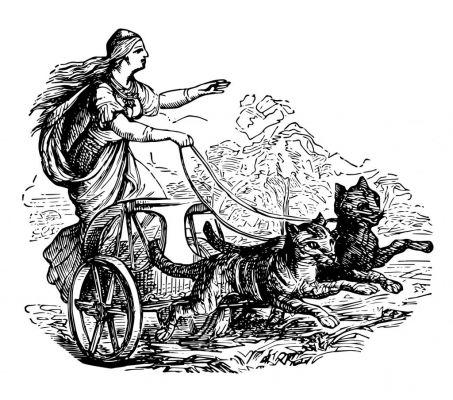
Njord: god of the seas and winds, father of Freya and Frey, he was worshiped by those who traveled by sea, who asked for his protection, as he was usually portrayed as a boatman.
Tincture of gold: Witch-goddess, Gullveig is the goddess of vanity, ambition and the accumulation of wealth. She is portrayed as cruel and greedy. It was destroyed by the Aesir in the war between that clan and the Vanir. Despite being killed by Odin 3 times, she always resurrects.
Owns: god of the oceans, he was very friendly with the jotun, also called giants, who lived in Jotunheim. Despite being god of the waters, he was considered cruel and received offerings not to help the marines, but not to kill them.
Clan of the Aesir
Odin: called the father of all, he is the main god of the clan and considered the god of wisdom, death and war. He was portrayed sometimes as very wise, sometimes as cruel and merciless. He is the father of Tyr, Thor, Balder, among others.
Frigga: mother-goddess of the Aesir, wife of Odin, is the goddess of fertility, union and love of this clan, in addition to being protector of the family, mothers and housewives, being a symbol of welcome and sweetness.
Thor: god of thunder and strength, he is famous for his hammer, Mjolnir, which he always carries with him and which no one is able to lift. He is a god portrayed as nearly invincible and who always unbalances the wars he participates in.
Curls: Thor's brother, is a controversial figure. Considered the god of lies and trickery, he can take any form he wants, which he uses to deceive many people. Unreliable, he hindered the path of many gods and plotted Balder's death.
Balder: god of justice and wisdom, Balder traveled the nine kingdoms mediating conflicts and ending wars and battles because of his diplomacy skills. He had his death plotted by Loki.

Heimdall: He is the god responsible for guarding the Bifrost, a rainbow-shaped bridge that connects Asgard and the Nine Realms. During Ragnarök, the end of the world in Norse mythology, he will herald the end with his trumpet.
Tyr: god of combat and war, is an interesting figure because he did not promote bloody wars. On the contrary: his sense of justice led him to get involved in conflicts in order to end them in a fair and honest way.
Heroes, monsters and mythological animals
In addition to the gods, who are the protagonists of Norse mythology, there are other important figures. Heroes, for example, are mere mortals, human beings who, with or against the will of the gods, have achieved great things.
In addition to them, we have creatures and beings of different species, such as light and dark elves and dwarves, as well as sacred and very powerful animals, with very important functions in this universe. Check out details about these figures below:
Heroes
- Ragnar: famous warrior who would have been a descendant of Odin. He was one of those responsible for the beginning of the unification of the small Nordic kingdoms, which ended up becoming the present Scandinavian countries. He had many sons, considered the most powerful warriors of the time. In addition, he led the Vikings to England.
- B: a warrior and king of Sweden, the legend of Beowulf tells that he was responsible for defeating a feared dragon and the great monster Grendel, a huge and brutal creature that murdered for pleasure.
- Eric the red: considered more than a legend, as there is evidence that he really existed, he was banned from Norway and Iceland for having committed murder and traveled adrift until he found land that is now Greenland.
- Sigurd: also called Sigfried, is the central character of the poem Saga dos Volsungos. A direct descendant of Odin, he slew a dragon, found hidden treasure and became involved in a forbidden romance with a valkyrie, Brunhilda.
- Volsungo: Sigurd's father, was Odin's grandson and maintained a relatively close relationship with the god, who accompanied the growth of his children and donated to the family the sword Gram, which was used by Sigmund, son of Volsungo.
monsters and creatures
- Jörmungandr: son of Loki is a gigantic serpent so big that it circles the globe and bites its own tail. She lives in the oceans of Midgard, which is Earth. During Ragnarök, she fights a battle to the death with Thor.
- Fenrir: a monstrous wolf, is also the son of Loki. During Ragnarök, this wolf shows his true power and slays the mightiest of the gods, Odin. Fenrir hated the gods for having been imprisoned by them for years as he had become too big.
- light elves: are creatures that inhabit the Alfheim kingdom, love nature and are protective of it, so their world is full of trees and rivers, in addition to being hostile to anyone who kills any living thing.
- dark elves: are creatures that inhabit the world of Svartalfheim. Despite the name, they are not bad. They are just more introspective and prefer to live where there is darkness, because they can be turned to stone if exposed to light for too long.
- Jotun: is a race of giants that inhabit the world of Jotunheim. They are very strong, indomitable, and yet peaceful, as long as they are left alone. They are enemies of the Aesir, who kill the giants out of sheer fear that they are too strong.
- Troll: are hideous, deformed giants that live in the forests of Midgard, Earth. They hide in caves and underground because they turn to stones if they see sunlight. They are mean, but very stupid.
- Dwarves: Dwarves inhabit both Midgard and Svartalfheim, the realm of the dark elves. They are short, bearded, often live underground and enjoy working with iron, being masters of hammer and armor construction.
- Valkyries: are nine deities less than the gods, obedient to Odin and Freya. They are responsible for selecting the most heroic warriors so that they inhabit Valhalla, a kind of paradise for the brave and the brave.
sacred animals
audumble: it is a cow, which, oddly enough, gave rise to the lineage from which Odin and other gods were born.
Skol: wolf that chases the horses Arvak and Alsvid, who carry, respectively, the Sun and the Moon, so there is the transition between day and night.
Ratatouille: a squirrel that runs along the branches of Yggdrasil, the tree of life, spreading gossip and tales from the nine kingdoms.
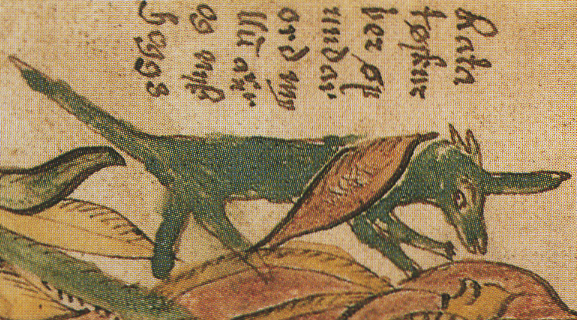
Garm: a large dog that guards the realm of the goddess Hela, Helheim, which is a kind of hell in Norse mythology.
Sleipnir: is the legendary eight-legged steed, mount of Odin and considered the fastest animal in the nine kingdoms.
Nidhogg: a huge and monstrous dragon and serpent mix that gnaws at the roots of Yggdrasil, the tree of life, making room for the end of time. It feeds on the bodies of the unworthy dead, who did not go to Valhalla.
Main Norse Myths
Like other religions, Norse mythology has its own myths about the world, paradise, the underworld, the end of time, and so on. In order for you to familiarize yourself with these myths, we have separated some of them.
Yggdrasil
Yggdrasil is a huge and colossal tree, usually associated with an ash tree. She is at the center of the universe and connects the nine realms of Norse mythology (more details in the next topic). Its roots extend to the deepest of realms, Niflheim.
The fruits of this tree provide the answers to the great existential questions, so it is guarded by the valkyries, who do not allow the entry of mortal beings, nor of gods.
Near the roots of these trees dwells a god called Mímir, who is the wisest god of all and, therefore, tries not to get involved in the affairs of the Aesir and the Vanir. For a chosen few, it opens access to their eternal source of wisdom.
the nine kingdoms
In the universe of Norse mythology, there are nine kingdoms distinct from each other, each with its own characteristics and with one or more different peoples. There are two ways to travel through these worlds: using the branches of the Yggdrasil tree or via the Bifrost, a bridge that connects Asgard to all realms.
The realms are as follows: Midgard (Mannheim), the realm of mortal men, ie Earth; Asgard (Godheim) is the realm of the Aesir gods; Vanaheim is the realm of the Vanir gods; Helheim is the world of the dead where the unworthy of Valhalla go; Svartalfheim is the realm of dwarves and dark elves.
Besides these, there are still Alfheim, the realm of the light elves; Jotunheim, the realm of giants; Niflheim, the realm of eternal ice, where the frost giants live; and Muspelheim, the realm of eternal fire, where the fire giants live.
Ragnarök
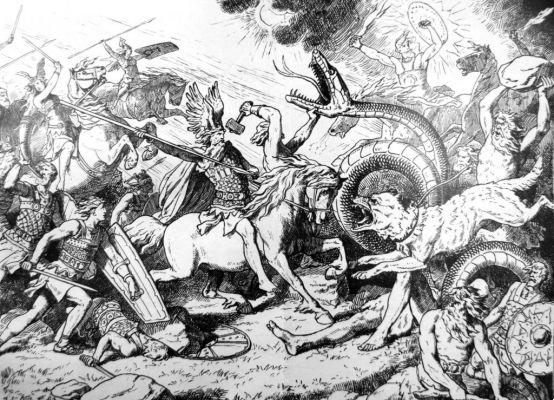
Ragnarök is the Norse end-time myth, the apocalypse of that mythology. A literal translation of this term means something like "fate of the gods". It is an event in which a series of events and clashes between gods unfolds that, so powerful and catastrophic, ends the nine worlds and everything that exists.
Unlike other religions, which predict a kind of paradise after the apocalypse and doomsday, Ragnarök is really the end of the line for the Norse mythology universe.
And that's because the fights between the gods are so violent and destructive that they leave no stone unturned, decimating everything that exists in all nine realms.
fimbulwinter
Fimbulwinter is a sequence of three winters with no summer break leading up to Ragnarök. According to legend, snow falls endlessly from all directions, and endless wars ravage Midgard and the other realms of the universe.
During fimbulwinter, chaos and anguish will reign. Friends and couples will fight and there will be death, suffering and pain, creating the ideal environment for the clashes that characterize Ragnarök to take place.
The term is so popular that, in countries like Denmark, Norway and Sweden, to this day it is “fimbulwinter” is a word used to describe a harsher winter.
the war of the gods
Also known as the Aesir-Vanir War, it was a war that took place between the two clans of gods. The most reliable sources on this mythology, the Prose Edda and the Verse Edda, do not talk about the origin of this bloody war.
They only tell that, to end the war, the Vanir gods ceded to the Aesir gods the deity Freya, who moved from Vanaheim to Asgard and never inhabited the fact that she abandoned her planet full of nature and harmony to inhabit the war of egos. and powers of the Aesir gods.
Legends tell the story of Freya, a Vanir, and Frigga, an Aesir, but historians suspect that both were the same deity and that her name varied according to the region, so she, who was Odin's wife, received these two distinct names.
Relationship between mythology and the present
Norse mythology has now become part of global culture, having influenced movies, books, video games and many other different types of content. Its popularity remains great and there is even a movement to rescue its traditions in Nordic countries.
Some of its heritages include, for example, the names of the days of the week in the English language: Sunday (Sunday) comes from Sunna, goddess of the Sun; Monday (Monday) comes from Máni, brother of Sunna, who represents the Moon; Tuesday (Tuesday) comes from the god Tyr; Wednesday (Wednesday) comes from Woden, that is, Odin; Thursday (Thursday) comes from Thor; Friday (Friday) comes from Frida, the Vanir. Only Saturday (Saturday) comes from Saturn, from Roman mythology.
Norse mythology in movies, series and books
Norse mythology is so popular and important to History that it continues to inspire new content to this day, including movies, series and books, which, even centuries later, continue to fascinate as they are based on Scandinavian beliefs.
We have prepared a list of 3 movies/series and 3 books for you, who want to know the Norse legends and beliefs in more depth:
Movies and series
- “Vikings” (2013-2020) — A great epic with almost 90 episodes and 6 seasons. Blending fiction and history, the series traces the lineage of the legendary warrior Ragnar Lothbrook, from his rise from small farmer to king to his legacy, which he passes on to his children.
- “Ragnarök” (2020) — Norwegian series in which young people from the modern world begin to receive the same powers as the main gods of Norse mythology. The protagonist of the series is a young man who is the “reincarnation” of Thor. It is a series that targets young and teen audiences.
- “The Last Kingdom” (since 2015) — This series focuses on the long battle between the Vikings and the English, a major clash between Christian culture and Viking/Nordic culture, with serious consequences for both sides. The protagonist is Uhtred, an Englishman who was raised by the Vikings, which gives room for many contradictions.
- Marvel Cinematic Universe — In addition to superheroes such as Iron Man, Spider-Man, and Captain America, the Marvel Universe of Heroes has among its characters Thor (Chris Hemsworth), Loki (Tom Hiddleston) and Odin (Anthony Hopkins). The first arc of this universe, which ends in the first movie of The Avengers (2012), has Loki as the main villain.
- “Valhalla – The Legend of Thor” (2019) – In this film, two brothers are taken by Thor and Loki to Asgard, where they need to help the gods deal with barbaric enemies and none other than the tenebrous wolf Fenrir, the one who kills the Odin himself during Ragnarök.
Books
“Dictionary of Norse Mythology: symbols, myths and rites”, by Johnni Langer — Publisher Hedra (2015) — This book presents rites, myths and symbols of Norse mythology. The material has been prepared with great care and is written and organized by university professors from all over Spain, Canada and even Iceland, serving as a basis for anyone who wants to start researching and understanding this mythology.
You may also like
- Learn about Greek Mythology
- Discover the details of Japanese mythology
- Understand the mysteries of the Celtic people
“Nordic Mythology”, by Neil Gaiman — Intrinsic Publisher (2017) — The famous author Neil Gaiman brings together in this volume the essentials to understand and start studying Norse mythology, telling the main myths and the main legends, but with a unique voice and the great narrative skills of this renowned writer.
“Saga dos Volsungos”, edited by de Theo de Borba Moosburger — Publisher Hedra (2009) — Read the original and translated version directly from Icelandic of the story of Volsungo and Sigurdur, all in an annotated edition that contextualizes each part of the story, ensuring a fluid and light reading, despite the dense content.
Norse mythology, like any religion, is quite fascinating and presents its own gods, myths and beliefs, being a rich and very interesting universe for anyone who intends to study it, because, more than a religion, it is an essential part of Viking and Scandinavian culture.




